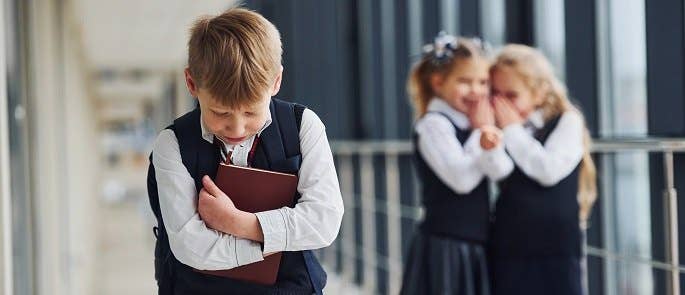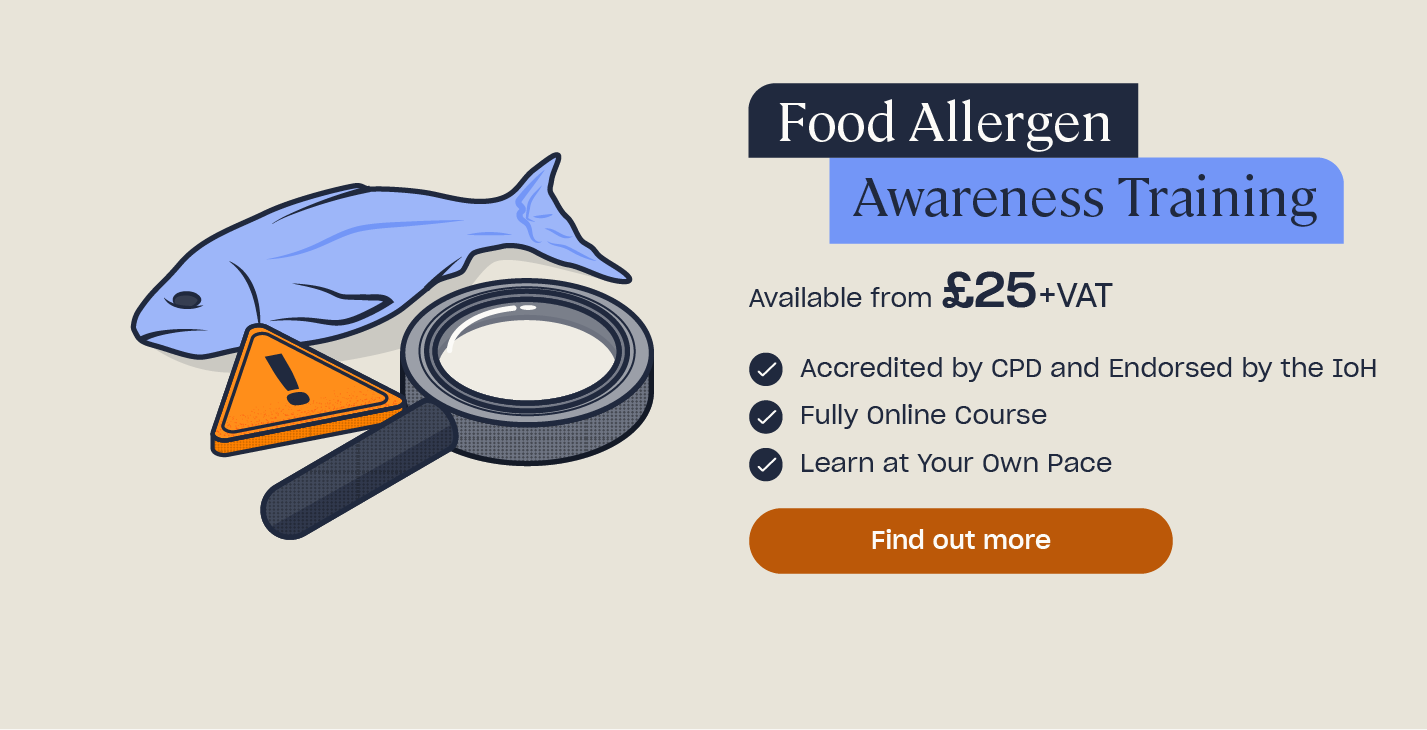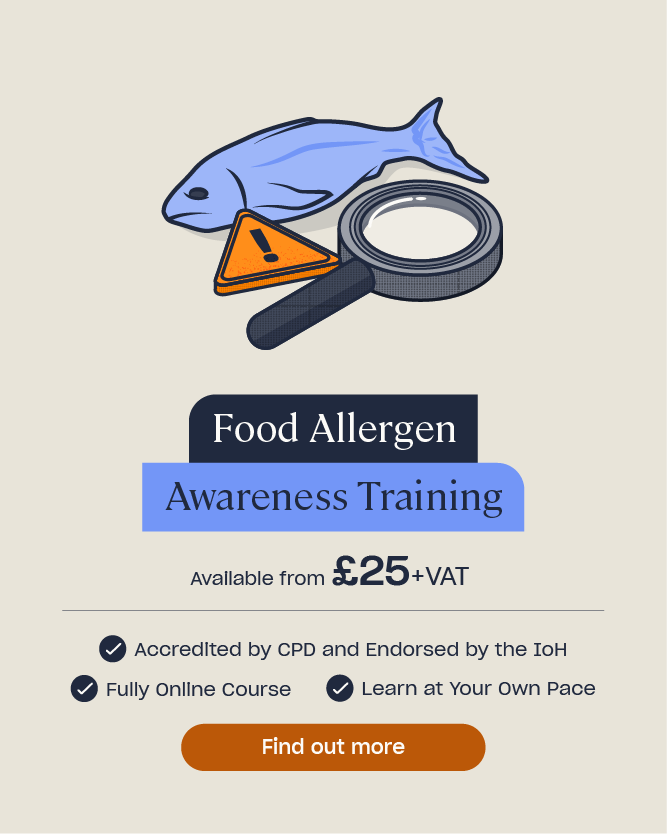How to Spot Allergy Bullying
An allergy is where the body’s immune system reacts to a substance that is usually harmless, like dust, pollen or certain foods. The immune system mistakenly recognises the substance as a threat and has an inappropriate response, producing the symptoms of an allergic reaction. These reactions can range from mild and irritating, to life threatening if anaphylaxis occurs.
In the UK, 40% of children are living with a diagnosed allergy. This means that most school classrooms will have at least one pupil who has an allergy. Allergies can seriously impact a child’s quality of life, in all aspects of life, including their time at school. Because having an allergy can make a child appear different from those around them, it can also lead to bullying.
Allergy bullying can be extremely dangerous for a child with an allergy, potentially even deadly. In this article, we will cover what allergy bullying is, how you can spot it and the steps you can take to prevent it from happening in schools.

What is Allergy Bullying?
Allergy bullying occurs when someone with an allergy, usually a child or teenager, is bullied because they have an allergy to something.
Food allergy bullying is the most common form of allergy bullying and, although it’s not one of the most talked about forms of bullying, as many as 32% of children have reported being bullied due to having a food allergy at least once. It can range from mean comments and teasing, to an allergic child being physically threatened with or tricked into handling or eating their allergen.
The consequences of allergy bullying can be extremely serious. For some children, being exposed to even a small amount of their allergen can put them at risk of anaphylaxis which, if not handled quickly and correctly, can result in death.
20% of serious allergic reactions to food involving children happen when they are at school. This can make sending a child with an allergy to school a daunting prospect for their parent or guardian. This is made worse by the prospect that their child could be threatened with their allergen by another child and that they may be treated poorly simply for having an allergy.
Although a child may have the knowledge and tools to keep themselves safe from their allergen, they can’t necessarily control what other people do to them and this puts them at risk.

Why Does Allergy Bullying Happen?
Bullying can take various forms and happen for many reasons but one of the main causes is when there is a perceived difference between the victim and those around them. This might relate to the victim’s:
- Sexuality.
- Race.
- Religion.
- Physical or mental health problem, including allergies.
However, ultimately bullying can result from anything that makes them appear or act differently to others.
There are several things that can make a child with an allergy appear different to others. For example, they might not be able to eat the same thing as other children or they might have to wear medical identification or carry an adrenaline auto-injector (AAI).
All of these things can single a child out as a target for bullies, particularly if other children don’t understand why the victim has to do these things. This could be the case if children are not properly educated about what allergies and allergic reactions are and the potential consequences of them.
This can also mean that children who take part in allergy bullying aren’t aware of the potential consequences of what they’re doing. Allergies can often be an invisible condition, until someone suffers a serious allergic reaction. Unless a child sees a severe reaction happen, they may not fully understand the consequences their physical threats could have.
For example, they might think that throwing peanuts at a child with a nut allergy is funny and might cause them to get itchy. However, in some cases, this could be enough to cause an anaphylaxis reaction. Although the perpetrator may view peanut allergy bullying as a funny prank, for the victim, this could be perceived as a violent threat.

The Impact of Allergy Bullying
It’s not only physical threats that can harm an allergic child, either. Verbal bullying can severely impact their mental wellbeing and self-worth, which can continue into adulthood. It may cause stress, anxiety, depression, self-harm and even suicide.
Allergy bullying can be particularly dangerous because it may lead victims to take risky or dangerous measures to stop the bullying from happening. For example, allergic children may:
- Stop wearing their medical ID to avoid being singled out for having an allergy.
- Stop carrying around their AAI so other children don’t find it and bully them for it.
- Try to appear more ‘normal’ by acting as though they aren’t allergic to their allergen at all, which may include trying to handle or consume the allergen.
Even allergic children who aren’t yet being bullied may perform these behaviours to avoid becoming targets themselves.
Looking to Learn More?
Our Food Allergen Awareness Training Course teaches food handlers, including school caterers, about food hypersensitivities – including allergens, how to be compliant with the UK’s allergen laws and how to label and communicate allergen information properly in order to keep people with allergies safe.
How Can You Spot Allergy Bullying?
It can sometimes be challenging to identify when a child is being bullied and, while asking them outright might seem like the simplest approach, this isn’t necessarily the case. The child may not want to disclose that they’re being bullied out of shame or embarrassment and in some cases – particularly among younger children – a victim of bullying may not realise what they are experiencing is bullying.
For these reasons, it’s more effective to ask children gentle, open questions that can help to uncover any changes in their behaviour and social life that might indicate they are being bullied.
You should ask questions such as:
- Who have you been sitting with at lunch and/or on the bus recently?
- Have you been finding it easy/difficult to keep away from your allergen at school?
- Is everyone at your school nice or are there any children you don’t get along with? Why do you think that is?
- What was the best/worst thing that happened at school today?
- Do you feel safe in school?
- Do you think the other children at school understand what it means that you have an allergy?
In addition to being able to communicate with a child about potential bullying, it’s also incredibly important that you are able to recognise the signs that a child may be experiencing allergy bullying.
Signs to look out for in a child include:
- Being reluctant, or making excuses not to do activities they once enjoyed.
- Changes in their eating and/or sleeping habits.
- Having an unexplained drop in their school performance.
- Being unwilling to carry their allergy medication or medical ID around with them.
- Walking to school if they previously took the bus.
- Changing who they sit with at lunch.
- Spending time alone and/or losing friends.
- Showing increased anxiety, possibly around their allergy, including panic attacks.
- Becoming withdrawn, depressed and/or unusually angry.
- Talking negatively about themselves.

How to Prevent Allergy Bullying in Schools
There are a number of ways for both school staff and parents to reduce the risk of allergy bullying in schools. These are listed below.
Having Clear and Concise School Policies
Every state school is required to have a behaviour policy in place, by law, which is decided by the school. This policy should be the first line of defence against bullying in schools and must:
- Explain what kind of behaviour is not permitted at the school, including the different types of bullying.
- State how cases of bullying or inappropriate behaviour should be dealt with if they happen.
- Include an anti-bullying strategy for preventing all types of bullying, including allergy bullying.
This policy should be clearly communicated to both school staff and parents so everyone understands and is reassured that the response to unacceptable behaviour will be consistent, proportionate and certain.
It should also be communicated to pupils in a way that is accessible and easy to understand – for example, having regular assemblies on school values and expectations, bi-annual anti-bullying newsletters and an annual anti-bullying day.
School staff must be trained to implement and uphold the policy in all situations so they can respond to inappropriate behaviour correctly.
Schools should also have a well-written and communicated allergy policy that covers safeguarding children with allergies from bullying. You can find out what your food allergy policy needs to cover here.
Allergy Awareness
To prevent allergy bullying from happening, it’s absolutely essential that school children and staff are taught what allergies actually are, and what they aren’t, and what they can mean for the person who has one. For example, they should understand that a food allergy is not the same as an intolerance but instead can have life changing consequences. This should include educating them on how allergies do and do not affect the lives of allergic people and why they might require a child to do things differently to other children.
Children should also be taught about the potential harmful effects of an allergic reaction and how severe these can be so they fully understand the full impact their physical threats could have on an allergic child. If you want to learn how to spot the signs of an allergic reaction to food, check out our article, here.
A whole-school approach to allergy awareness is essential for creating understanding and acceptance.
This can be achieved through:
- Dedicated assemblies or talks in lessons.
- Special projects or workshops.
- Putting up allergy awareness resources in the school, such as posters. We have a range of free, downloadable posters that you can print and display in your school.
- Giving someone with experience the chance to talk to pupils. This could be a child in the school who has an allergy and is willing to talk about it with others, or an external speaker. Either way, hearing first hand experiences is important for building understanding of allergies.
Anaphylaxis UK and Allergy UK both offer a hub of free resources you can use to build your own allergy awareness and promote allergy awareness in children. The Natasha Allergy Research Foundation, the UK’s food allergy charity, is also here to help with its new education programme – Allergy School. You can find more details on this in the dropdown below.
Allergy School 
The Natasha Allergy Research Foundation has created Allergy School, a new, free toolkit of engaging resources to help pupils, schools and out-of-school sports, community and activity groups feel more confident around food allergies.
These are brought to life by Arlo, the friendly food-allergic armadillo puppet, who makes learning about food allergies fun and engaging.
Allergy School includes:
- Two films for children featuring the puppet Arlo.
- A quiz for children about food allergies
- A first aid film on what to do in the event of a food allergy emergency.
- Engaging lesson plans for Key Stages 1 and 2
- An assembly pack.
- A quick and easy self-assessment tool to allow schools and clubs to determine how allergy-inclusive they are and how they can improve the safety and well-being of their allergic pupils.
To access the free resources, please visit: www.allergyschool.org.uk
If a child is educated on the consequences their bullying could have on an allergic person, this should encourage those who view their teasing as a ‘joke’ to reconsider what they are doing.
It’s also essential that parents and teachers teach children what allergy bullying looks like. This is beneficial to victims as they can identify and report when they are being bullied but also to other children who might witness the bullying, so they can either intervene and stand up for them, or report it themselves.
Modelling Inclusive Behaviour
Children often model their behaviour on what the adults closest to them do. For example, if a parent decides to exclude an allergic child from a birthday party because they want to serve food the child is allergic to, then their child might go on to repeat this behaviour in their own life and begin to exclude the child from their social circle. As an adult in a child’s life, you must be a role model for inclusivity.
Looking for a Course?
Our Equality, Diversity and Inclusion (ECI) Training Course teaches you how to promote equality and diversity and promote inclusion, both in and outside your workplace, whatever your role.
Avoiding Singling Out, Discriminating Against or Stigmatising Allergic Students
As a member of staff, it’s your responsibility to strike the right balance between keeping children safe in school and creating a culture where children with allergies are able to participate fully. Consider how your approach might affect that child’s relationship with others.
For example, if a teacher tells a class that they can’t have cake for someone’s birthday because Jimmy is allergic to nuts, by naming the child they put him at risk of being singled out with negativity from other children. This could escalate to allergy bullying.
As school staff, you should also avoid, wherever possible, doing anything that physically isolates allergic children from their peers as this constitutes allergy discrimination. For example, putting all of the allergic children in the school on a separate table at lunch. While this keeps them safe from their allergen, it draws attention to their allergy and makes them seem different from others, potentially increasing the risk of bullying.

This is the same for exclusion from any activity and should only be done if it’s agreed in the child’s Allergy Management Plan. All efforts should be made to make allergic children feel as included as possible at school, even if that means taking measures to remove their allergen from the environment.
Children with allergies should also not be labelled as, or implied to be, either victims or vulnerable. Although it’s important to make other children understand that allergic children are at increased risk of harm, this shouldn’t be done in a way that makes them seem weak or an easy target.
If you are a member of school staff, knowing how to conduct a food allergen risk assessment for your school will allow you to deliver a safe, inclusive and best practice environment for both pupils and staff. We offer a free, downloadable food allergen risk assessment template that you can use in your school, here.
Instilling Confidence
When it comes to preventing allergy bullying, it’s vitally important that children with allergies feel happy and confident about the fact they have an allergy. They should be taught that it’s not something to feel ashamed or embarrassed of. If a child is confident to speak about their allergies and doesn’t feel the need to hide it, it becomes far less likely that other children will see their allergy as something to pick on them for.
A confident child is also more likely to stand up to their bullies or report them if something happens, rather than keeping it to themselves, as a lack of confidence can make a child feel they deserve what’s happening to them.

Relationship Building
It’s up to an allergic child and their parent or guardian whether they tell other children about their allergy. While school staff must be aware to help keep them safe, they should not expose that child’s condition to other children. However, you may want to encourage them to talk about and educate their friends about their allergy, to begin to remove the stigma around it.
Research shows that having supportive friends makes allergic children less likely to take part in dangerous behaviours relating to their allergy. This is likely because they feel more accepted and less like they need to perform to fit in. Having a strong circle of friends can also reduce the likelihood of that child being bullied.
Another method of relationship building between allergic children and their peers is through a buddy system, though this is usually more effective among younger children who may not have developed a close circle of friends. A buddy system can help the child to feel supported and gives them the opportunity to share as much or as little as they want about their allergy.
You might also want to build a food allergy community in your school, for example by starting a club for children with allergies, and those who are just interested, to meet up and talk on a completely optional basis. Having a community and meeting others who understand them can help children feel safe and supported and build their confidence around their allergy.
Allergy bullying can quickly become a life or death situation and this is something no child should have to worry about when they go to school. When children are able to understand each other and their differences, this will create a more tolerant and accepting environment for everyone which is why teaching allergy awareness is essential.
Further Resources:
- How to Promote Equality, Diversity and Inclusion in the Classroom
- Precautionary Allergen Labelling: Guidance on ‘May Contain’
- Food Allergy Awareness Quiz
- Spotting the Signs of an Allergic Reaction to Food
- What is a Food Hypersensitivity?
- What are the Food Hygiene Requirements in a School?
- Anaphylaxis Awareness Training











